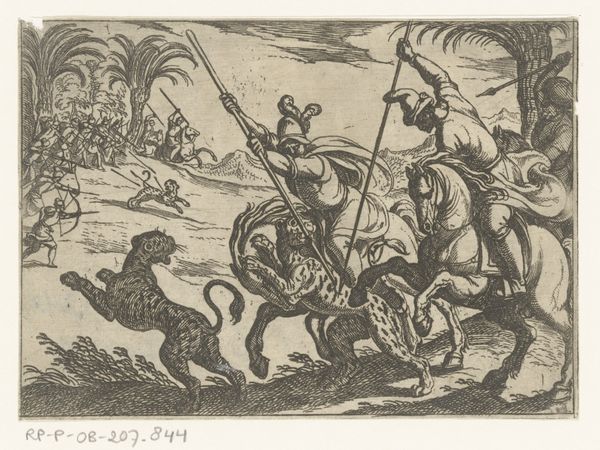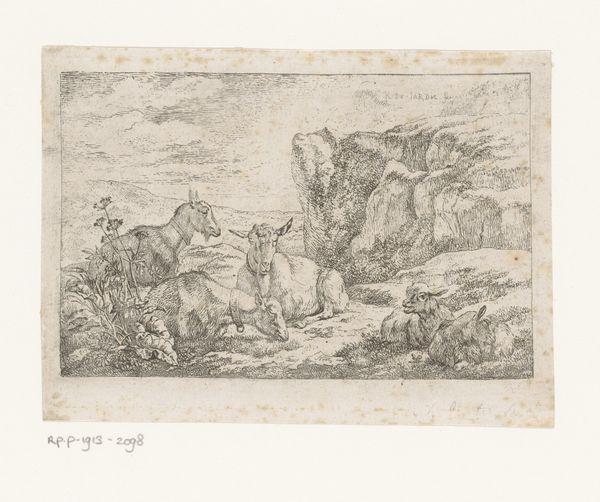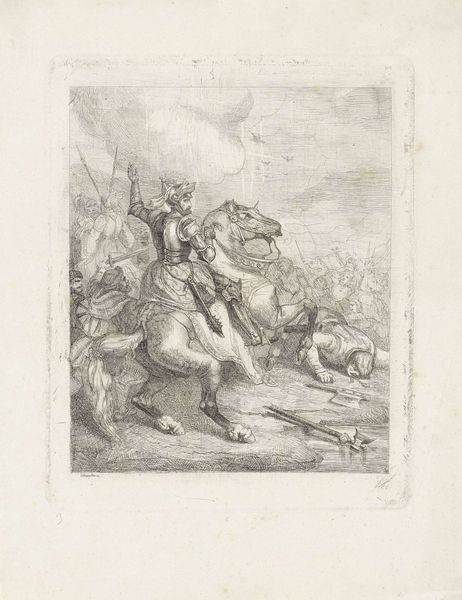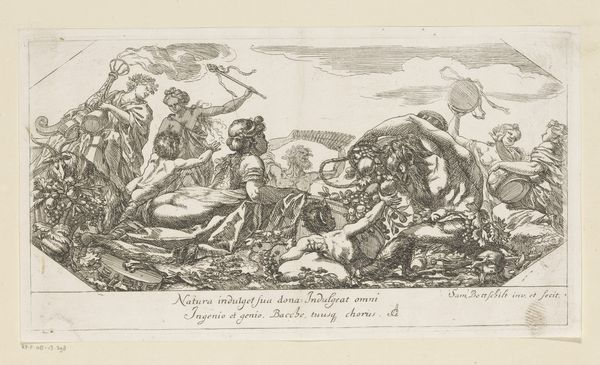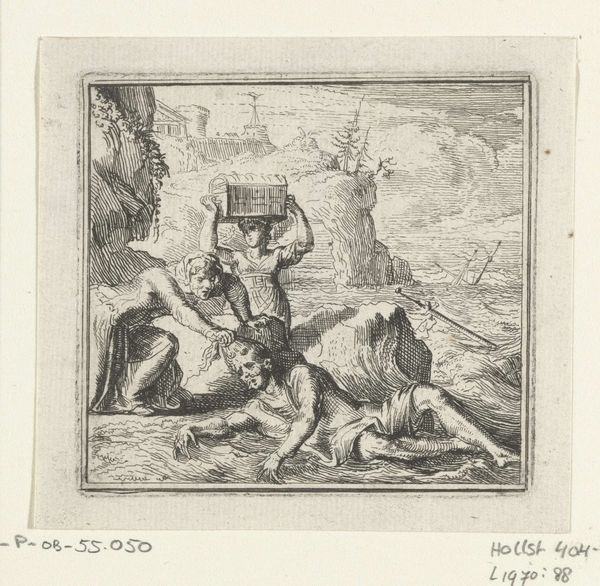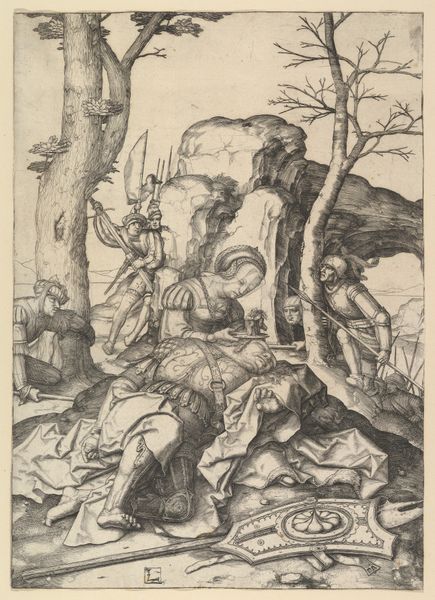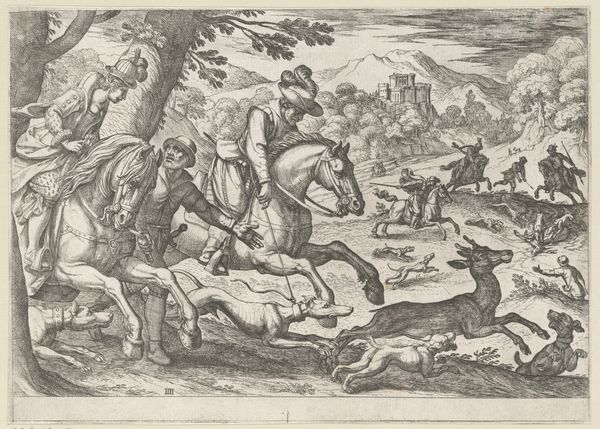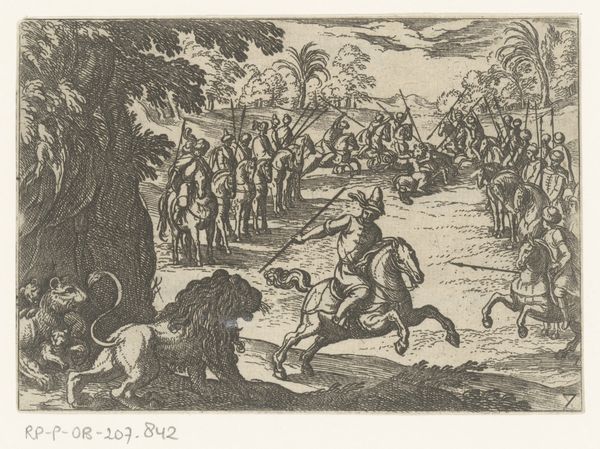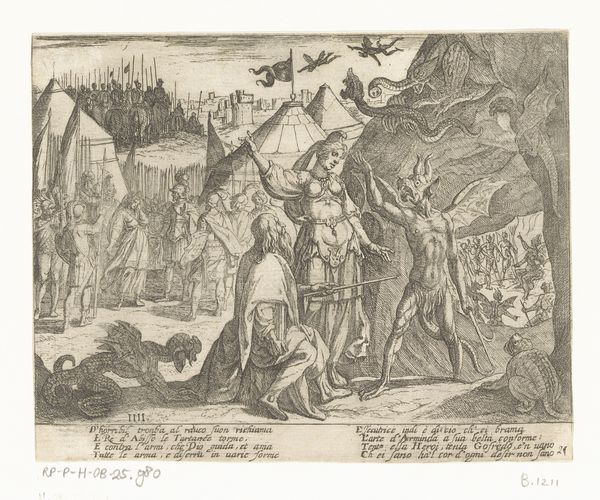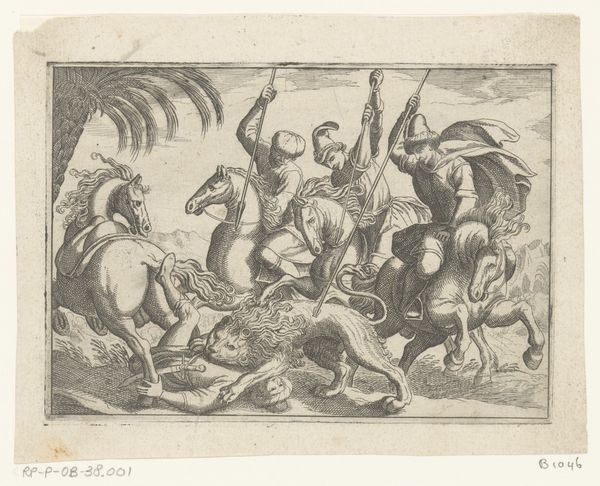
print, engraving
# print
#
landscape
#
figuration
#
genre-painting
#
northern-renaissance
#
engraving
Dimensions: height 91 mm, width 107 mm
Copyright: Rijks Museum: Open Domain
Marcus Gheeraerts’ etching, “Fabel van de jongen die wolf riep,” made sometime in the 16th century, encapsulates the timeless fable of the boy who cried wolf. The detailed etching depicts a shepherd boy in mid-cry, ostensibly alerting his village to the presence of a wolf, when in fact, as the foreground suggests, the wolf is actually there. The social context of the 16th century deeply influenced the perception of this fable. The ruling class often warned against the dangers of deceit among the lower classes, casting suspicion on their intentions. This narrative served as a cautionary tale, reinforcing the idea that dishonesty would eventually lead to one's own downfall. The emotional intensity of the boy's false alarm is palpable, yet it underscores the inherent tension between the powerful and the powerless. While the fable warns against lying, it also prompts us to reflect on the social structures that incentivize such behavior. Ultimately, this small, yet potent image, reflects the intricate relationship between individual actions and societal expectations, inviting us to reflect on the emotional and moral complexities of trust and deception.
Comments
No comments
Be the first to comment and join the conversation on the ultimate creative platform.
